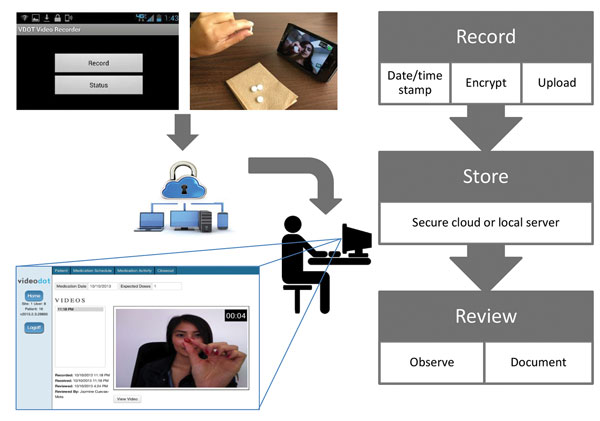Volume 24, Number 10—October 2018
Research
Tuberculosis Treatment Monitoring by Video Directly Observed Therapy in 5 Health Districts, California, USA
Figure 1

Figure 1. Schematic of asynchronous VDOT in a study assessing VDOT for monitoring tuberculosis treatment, 5 California health districts, 2015–2016. Patients use VDOT smartphone application to record a video of themselves ingesting their medications. After recording stops, the application encrypts the video and transfers it through a cellular or Wi-Fi connection to a server for storage and playback. On a routine basis, treatment monitors log into a secure website to view each video and document their observations. Missing videos or videos not showing complete dose ingestion trigger follow-up procedures to investigate missed doses and provide patient support as needed. VDOT, video directly observed therapy.
Page created: September 16, 2018
Page updated: September 16, 2018
Page reviewed: September 16, 2018
The conclusions, findings, and opinions expressed by authors contributing to this journal do not necessarily reflect the official position of the U.S. Department of Health and Human Services, the Public Health Service, the Centers for Disease Control and Prevention, or the authors' affiliated institutions. Use of trade names is for identification only and does not imply endorsement by any of the groups named above.